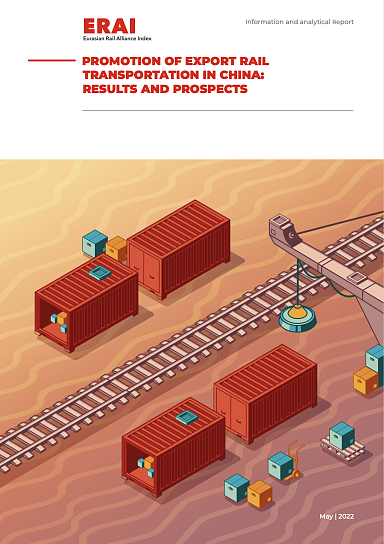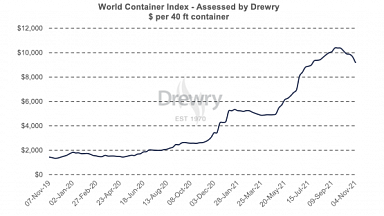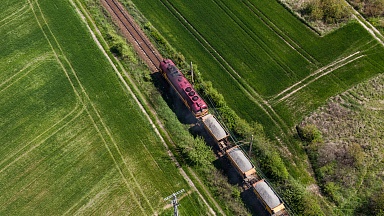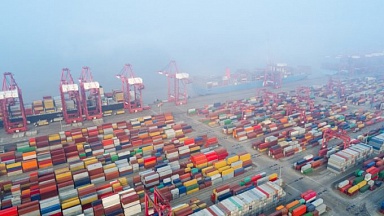By the end of 2021, the Eurasian transit railway route through Kazakhstan, Russia and Belarus alone accounted for about 5.5% of the annual trade turnover between China and Europe in value terms. One of the key drivers of the upsurge in Eurasian railroad freight traffic at the initial stage of development was subsidies to Chinese producers for exporting and importing goods through rail container traffic. Such incentives were most developed in 2018, when the subsidy for one container (FEU) could reach up to 5 thousand dollars, accounting for 50% of the cost of delivery. The use of subsidies fr om local authorities in China made it possible to accelerate the development of trans-Eurasian railway transportation — to fine-tune cooperation mechanisms, build transport and logistics links and scale them up in order to create a competitive alternative to the sea delivery method.
First of all, it is necessary to understand the political significance that was attached to the stimulation of continental methods of delivery of goods. The development of the transport component is a necessary condition for the implementation of the Silk Road Economic Belt initiative. From this point of view, the promotion of railway transportation has two goals: the socio-economic development of the regions of Western China and the organization of alternative ways of delivering goods while building relations with countries along the way. Thanks to the existence of a unified conceptual framework, the efforts of regional authorities in recent years have been primarily aimed at supporting rail container transport, which was encouraged and supported by local and central authorities.
The development of transit rail transportation as an alternative to sea freight is forcing China to gradually move away from this practice, but it is unlikely that the reversal will be abrupt, given also the sustainability of the Chinese decision-making culture. The indicated reduction in the subsidy from 50% in 2018 to 10% in 2022 reflects this logic, as does the postponement of the decision to cancel the subsidy in 2022 due to anti-COVID measures. Reducing or eliminating subsidies, which are now estimated to be in the order of $1,000 per FEU, will make some difference, but their scale is unlikely to reverse the established development trajectory.
Forecast of the share of subsidies in the cost of rail freight in Сhina
| 2018 | 2019 | 2020 | 2021 | 2022 | 2023 | 2024 | |
| Maximum allowable share of subsidies in the cost of rail freight | 50% | 40% | 30% | 20% | 10% | 10% | 0 |
| “Economically justified” cost of railway transportation, on average per 1 FEU | 10 000 | 10 000 | 10 000 | 10 000 | >10 000 | >10 000 | >10 000 |
| Subsidy amount, on average per 1 FEU | 5 000 | 4 000 | 3 000 | 2 000 | 1 000 | 1 000 | 0 |
| Actual tariff, on average for 1 FEU | 5 000 | 6 000 | 7 000 | 8 000 | >9 000 | >9 000 | >10 000 |
Source: compiled by the authors
In the first half of 2022, the volume of trans-Eurasian cargo transportation decreased by 8.7% from 336.6 to 307.2 thousand TEUs. Political turbulence and sanctions affected supply chains in both directions, but more so from Europe to China, wh ere the reduction was 15%, while from China to Europe only 5%. Against this background, the average train load also decreased, from 115 TEU in the first half of 2021 to 110 TEU in the same period of 2022.
To date, the main problem of continental delivery methods is not an increase in the supply of transportation, but infrastructure limitations. In 2022, the capacity of the container terminal at the Dostyk border crossing in Kazakhstan was expanded. Opportunities for further infrastructure expansion are being explored.
In addition to infrastructure development, the most important area is the balancing of cargo flows due to the dominance of shipments in the western direction — from China to Europe. The share of loaded containers in both western (westbound) and eastern (eastbound) directions showed an increase in the period 2016–2021. In the first half of 2022, there is a slight decrease in the load rate in the east direction — from Europe to China. Given the disproportions in China’s trade with the EU, the issue of empty containers remains relevant.
Subsidizing seems to be a rather flexible tool for solving problematic issues of development of continental railway routes. Appropriate subsidies allow to accelerate the return of empty containers to China, the shortage of which in China led, among other things, to a sharp increase in the cost of shipping cargo in 2020. In addition, subsidies can be targeted for the development of certain export/import segments or routes.
Finally, the policy of the Chinese authorities in the field of subsidies, the gradual abandonment of the most large-scale forms of subsidies is influenced by the non-market nature of such a mechanism. According to the rules of the World Trade Organization, such subsidies are distortions in trade, in connection with which the desire of the Chinese authorities to move to more nuanced forms of support for an already quite successful project is obvious.



